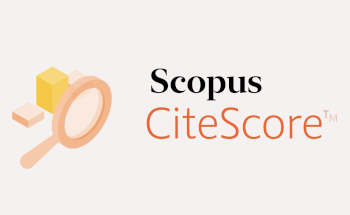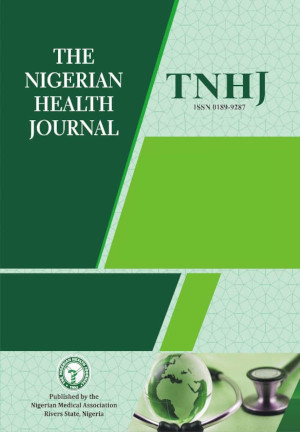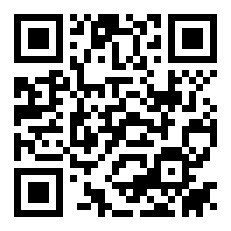Healthcare Providers’ Reports of Encounters with women with Cryptic Pregnancies and HIV status of Acquired babies in Southeast Nigeria
DOI:
https://doi.org/10.71637/tnhj.v25i3.1161Keywords:
Female infertility, HIV Infection, Pregnancy, ScamAbstract
Background: Nigerian cryptic or false pregnancy is a scam that lures infertile women into believing they can conceive and give birth to their babies. Case reports have documented HIV-infected babies born to HIV-negative mothers via the Nigerian cryptic pregnancy. The study explored healthcare providers’ encounters with women who had babies through the Nigerian cryptic pregnancy method and the health outcomes of the infants.
Methods: It was a cross-sectional observational study conducted among 388 healthcare providers who completed the questionnaires from two tertiary hospitals in Abakaliki. A structured e-questionnaire (Google Form) was sent to various specialties within the hospitals via their respective group WhatsApp platforms, and the necessary information was extracted from the completed questionnaires.
Results: A total of 185 (47.7%) of the 388 healthcare providers had encountered women who had babies through the Nigerian cryptic pregnancy scam. The majority of the healthcare providers were females (120/185, 64.9%), married (150/185, 81.1%), and medical doctors (135/185, 73.0%). More than half (57.3%) had practiced for 11 to 20 years, and 42.7% were within 40-49 years of age. A total of 36 (19.4%) of the healthcare providers reported HIV infections in children born through the Nigerian cryptic pregnancy. Of note was that the ascribed mothers were HIV-negative. There was a significant relationship between having an HIV-infected child and place of delivery of the cryptic pregnancy (ꭓ2 = 27.06, p-value <0.001).
Conclusion: The frequent reports of HIV-infected babies from cryptic pregnancies are of great concern, highlighting the need for awareness and stronger health systems.
Downloads
References
1.News-Medical. What is a Cryptic pregnancy? News Medical Life Sciences; 2019. Cited on 2025-07-04. Available from https://www.news-medical.net.
2.Nto-Ezimah UA, Nto NJ, Esom EA, et al. Unexpected delivery: a case report of cryptic pregnancy in Nigeria. Pan Afr Med J. 2020; 22 (36): 205. doi: 10.11604/pamj.2020.36.205.23790.
3.Watson, K. What is a cryptic pregnancy? 2019 Cited on 2025/07/05. Available from http://www.healthline.com/health/pregnancy/cryptic-pregnancy.
4.Kirsten D. Cryptic pregnancy: Case Reports in Women's Health. 2023; 38: e00503 doi:10.1016/j.crwh.2023.e00503.
5.Wariboko OPC, Iheanacho NN. A socio-religious appraisal of the “Cryptic pregnancy” phenomenon in Nigeria. Revista Romana de Sociologíe 2020; 31:159-172.
6.Mohammed-Durosinlorun A, Adze J, Bature S. et al. Use and pattern of previous care received by infertile Nigerian women. Fertil Res Pract 2019;5: 14. Cited on 2025/07/05. Available from https://doi.org/10.1186/s40738-019-0068-6
7.Yaakugh, C. Doctor talks about the cryptic pregnancy scam going on in Nigeria. 2019. Cited on 2025/07/05. Available from https://www.legit.ng/1248421-doctor-talks-cryptic-pregnancy-scam-nigeria.html.
8.BBC Africa publication, 'Pregnant' for 15 months: Inside the 'miracle' fertility scam’ Cited on 2025/02/20. Available from https://www.bbc.co.uk/news/articles/c78dyryreyxo
9.Obaji, P. Survivors of Nigeria’s ‘baby factories’ share their stories. Aljazeera. 2020. Cited on 2025/07/05. Available at https://flipboard.com/article/survivors-of-nigeria-s-baby-factories-share-their-stories/f1593bd95%2Faljazeera.com.
10.Maria-Lauretta Orji, Oluchukwu Cecilia Oyim-Elechi, Joseph Agboeze, Matthew Igwe Nwali, Review of four unusual cases of HIV-positive infants; cryptic pregnancy scam and mother-to-child transmission of HIV in Nigeria, Journal of Public Health, 2023; 45 (3): 706–9, Available from https://doi.org/10.1093/pubmed/fdad048
11.Anthony E. Ogbeibu. Biostatistics. In: Anthony E. Ogbeibu P(editor). A Practical Approach to Research and Data Handling. 2nd ed. Benin: Mindex; 2014.p.20-2
12.NACA Nigeria. NAIIS. (2018). Nigeria HIV/AIDS Indicator and Impact Survey (NAIIS) 2018 Summary Sheet. Cited on 2025/07/05. Available at https://naca.gov.ng.
13.Frescura L, Godfrey-Faussett P, Feizzadeh AA, et al. Achieving the 95 95 95 targets for all: A pathway to ending AIDS. PLoS ONE 2022;17 (8): e0272405. doi: 10.1371/journal.pone.0272405.
14.Nkwo P. Prevention of mother-to-child transmission of human immunodeficiency virus: the Nigerian perspective. Ann Med Health Sci Res. 2012;2: 56-65. doi: 10.4103/2141-9248.96940.

Published
Issue
Section
License
Copyright (c) 2025 Maria-Lauretta C. Orji, Oluchukwu C. Oyim-Elechi, Kosolu Y. Okiche, Michael O. Orji, Ezinne S. Agbo, Anulika C. Nwobi, Nnamdi B. Onyire

This work is licensed under a Creative Commons Attribution-NonCommercial-ShareAlike 4.0 International License.
The Journal is owned, published and copyrighted by the Nigerian Medical Association, River state Branch. The copyright of papers published are vested in the journal and the publisher. In line with our open access policy and the Creative Commons Attribution License policy authors are allowed to share their work with an acknowledgement of the work's authorship and initial publication in this journal.
This is an open access journal which means that all content is freely available without charge to the user or his/her institution. Users are allowed to read, download, copy, distribute, print, search, or link to the full texts of the articles in this journal without asking prior permission from the publisher or the author.
The use of general descriptive names, trade names, trademarks, and so forth in this publication, even if not specifically identified, does not imply that these names are not protected by the relevant laws and regulations. While the advice and information in this journal are believed to be true and accurate on the date of its going to press, neither the authors, the editors, nor the publisher can accept any legal responsibility for any errors or omissions that may be made. The publisher makes no warranty, express or implied, with respect to the material contained herein.
TNHJ also supports open access archiving of articles published in the journal after three months of publication. Authors are permitted and encouraged to post their work online (e.g, in institutional repositories or on their website) within the stated period, as it can lead to productive exchanges, as well as earlier and greater citation of published work (See The Effect of Open Access). All requests for permission for open access archiving outside this period should be sent to the editor via email to editor@tnhjph.com.













